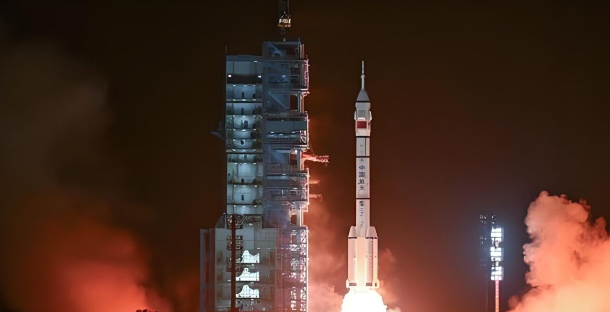 |
| China's Shenzhou-18 Mission: A Step Forward in Space Exploration |
China recently achieved another milestone in its ambitious space program with the successful launch of the Shenzhou-18 spacecraft. Carrying a three-member crew to the Tiangong space station, this mission marks a significant advancement in China's efforts to establish a strong presence in space exploration.
Launch and Crew:
The Shenzhou-18 spacecraft lifted off from the Jiuquan Satellite Launch Center atop a Long March 2-F rocket, signaling the beginning of a six-month journey for its crew. Commanded by Ye Guangfu, alongside fighter pilots Li Cong and Li Guangsu, the mission embarked on its journey to the orbiting Tiangong space station.
Mission Objectives:
Over the next six months, the crew will conduct a series of scientific tests, install crucial space debris protection equipment, and carry out payload experiments. Additionally, they aim to popularize science education, contributing to the broader objectives of China's space program.
Space Station Program:
China's pursuit of its space station follows its exclusion from the International Space Station, prompting the nation to build its own. The Tiangong space station, a testament to China's independent space capabilities, is slated for further cargo and manned missions in the coming years.
Future Plans:
Looking ahead, China envisions broader participation in space exploration, including offering access to its space station to foreign astronauts and space tourists. Moreover, ambitious plans include missions to retrieve samples from Mars and lunar expeditions, ultimately culminating in putting astronauts on the moon by 2030.
Achievements and Progress:
Since its inaugural crewed space mission in 2003, China has made remarkable strides in space exploration. Notable achievements include bringing back lunar samples and successfully landing a rover on the far side of the moon. The Shenzhou-18 mission underscores China's growing capabilities and steadfast commitment to advancing space exploration.
